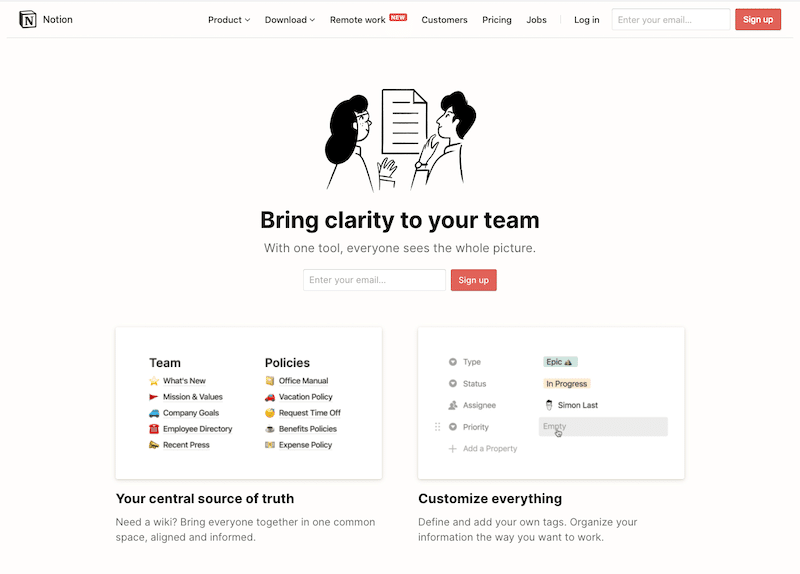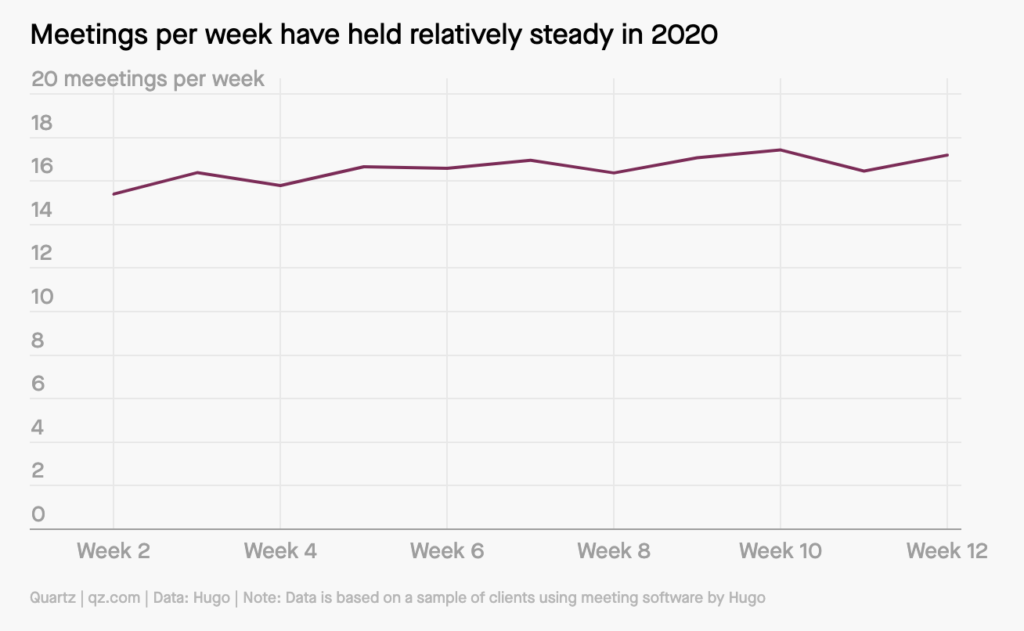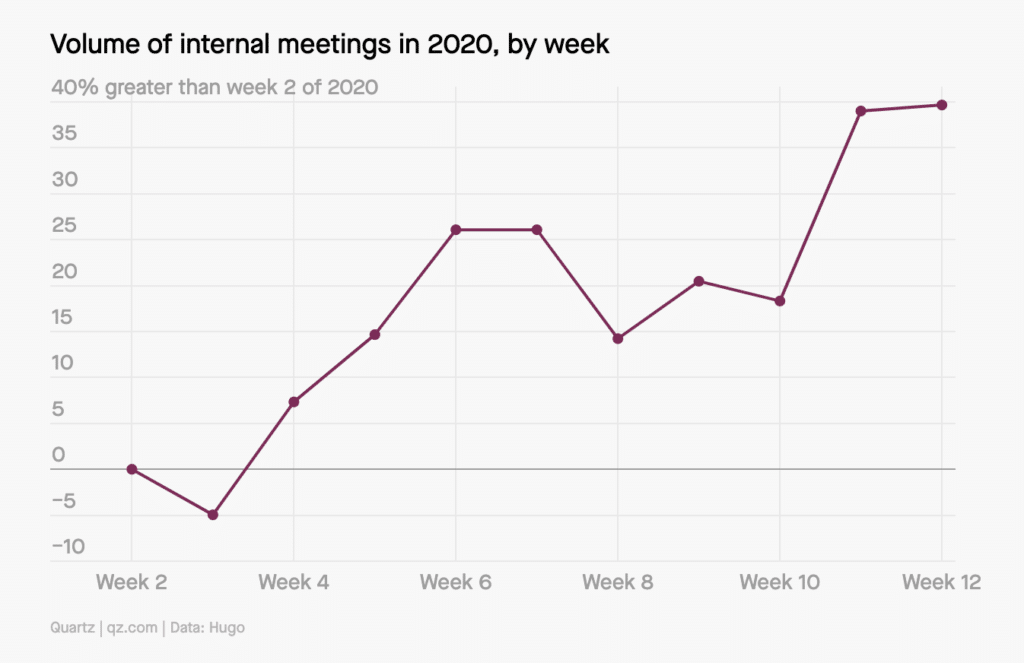This week on the Sales Hacker podcast, we speak with Lori Richardson, founder of Score More Sales.
Loris is passionate about pursuing, advocating, and furthering the cause of female sales leadership and helping women advance through their careers. To that end, Lori also founded Women Sales Pros, the first community online dedicated to helping smart, savvy women get into B2B sales positions and sales leadership and to help companies find and develop great women sellers. We talk about what makes a great sales person.
If you missed episode 106, check it out here: Want to Become a CEO? Advice & Tactics for First-Time CEOs with Jim Sharpe
Subscribe to the Sales Hacker Podcast
Show Agenda and Timestamps
- Show Introduction [00:04]
- About Lori Richardson and Score More Sales [02:09]
- Why origin stories are so important [4:53]
- The essential elements of great sales leadership [10:45]
- Why it’s important to have diversity in sales [15:55]
- A primer on social selling [19:53]
- How to pivot to when leading a sales team during a crisis [23:14]
- Lori’s thoughts on the future sales after the coronavirus crisis [29:18]
- Sam’s Corner [34:07]
Show Introduction [00:04]
Sam Jacobs: We’re excited to have on the show, Lori Richardson, a really well-known thought leader and speaker in the sales community. She founded Score More Sales in 2002, which is her sales consulting sales training business, and she founded Women Sales Pros in 2014 and she’s passionate about pursuing, advocating, and furthering the cause of female sales leadership, female sales executives and just helping women make sure that they don’t hit that glass ceiling and that they advance through their career. She started off as a teacher and a single mom and moved into sales after that. She’s seen pretty much every trend there is in the sales scheme of things.
Now, before we get into the conversation, we want to thank our sponsor. Our sponsor is Outreach. Outreach revolutionizes customer engagement by moving away from siloed conversations to a streamlined and customer-centric journey. Leveraging the next generation of artificial intelligence, the platform allows sales reps to deliver consistent, relevant, and responsible communication for each prospect, every time, enabling personalization at scale that was previously unthinkable.
Outreach produces incredible industry leading events like their Unleash conference; I’ve been in and it’s awesome. And their city by city Unleash summit series road shows, along with top notch thought leadership content. Check them out at www.outreach.io.
Now, without further ado, let’s listen to this interview with Lori Richardson.
About Lori Richardson and Score More Sales [02:09]
Sam Jacobs: Today on the show, we’ve got a woman that a lot of people know in the sales world and a lot of women look to for inspiration. That’s Lori Richardson. Let me read you her bio really quickly.
Lori Richardson wants to literally change the face of sales and sales leadership and B2B companies, especially tech. She’s been in the world of sales for longer than most. She’s a top sales influencer, grew up selling from the time she had a lemonade stand on a dead-end street and believes sales is the ultimate profession. She loves watching ice hockey, is a former musician and used to be a fundraising auctioneer. She’s president of the Boston Chapter of the AA-ISP, is a founding member of the Sales Enablement Society, advisor for several companies and organizations including the Sales Education Foundation.
Lori Richardson: Thank you, Sam. It’s wonderful to be here.
Sam Jacobs: Tell us just about your business. Let’s give you an opportunity to tell us what you do, what your consulting services are, and then we can go from there.
Lori Richardson: I started a sales consulting business in 2002, which seems like forever ago. And about seven years ago, changed the way I did business. So it involved a lot more data. Now I work with companies on figuring out a lot of different data points about their sales teams and then help them make sense out of it and be more effective and productive. I also started Women Sales Pros about six years ago, which is an organization to get more women into sales and sales leadership.
We have a group of 50 women sales experts. Many people have heard of, you know Trish Bertuzzi and Sherry Levitan, who I know was just on your show, Jill Konrath and Colleen Stanley and just a great group of 50 women. We also have a commercial side of the house where we consult with companies to help them find, hire, retain, and promote women in sales. So I was doing quite a bit of that until a pandemic hit. And you can imagine that suddenly there are a lot of things that you had to go back down to the basics.
And so some of that’s on hold right now, but what I really like, Sam, is that some of the companies that I was working with, some said, “You know what? We just can’t deal with this. We’re not working on anything to do with how our sales teams are going to look. We just have to survive.” Other people said, “This is important. Inclusion is still a commitment to us and we’ll just put it on hold for now.” And I think how people message things is really important these days.
Why origin stories are so important [4:53]
Sam Jacobs: I agree with you. But the first thing I want to hear about is “origin story” because I think it’s pretty inspiring. So tell us, how’d you get to this point in your career and walk us through the origins of your career in sales and let’s hear about that.
Lori Richardson: I grew up in my grandmother’s clothing store and my grandmother had a high-end women’s apparel store. She had several of them actually. And I left that and ended up becoming a teacher. So I thought I would be a teacher because that was my lifelong dream. Was to teach from the time I was very young and I became a single parent in my early 20s. So what I realized is I couldn’t afford to be a single parent on a teacher salary, at least where I was, which was in the Seattle area. And so I drew on my childhood and just growing up in this business where I always knew that I knew how to sell, which is kind of unusual, especially for a woman, and I knew that maybe I could sell something technology related. And so I ended up getting into the tech boom of the ’80s which was huge. And basically you could be an innocent bystander and kind of get swooped into this and make a decent living. So it was quite a great start and I have never looked back. I’ve been in sales in one capacity or another ever since.
Sam Jacobs: What were you selling when you went in that part of the tech boom?
Lori Richardson: I was selling the first personal computers. Apple had computers that they had in schools and I sold the first business computers that Apple made. The Mackintosh is what it was called originally. IBM had computers and Compaq, which ended up being acquired a number of different… Hewlett Packard had computers. So, all sorts of PCs and peripherals and training and services.
Ended up working with some very large companies and very large deals and it was really great. My first job, there was no issue about being a woman and I worked with this amazing group of folks. Some of us still keep in touch, but subsequent positions were not the same where I had to really sell myself over and over again and take less pay and a number of different things. So I’m glad that I had a really good first initial career.
My first job in sales went really, really well. I know some people that get really turned off by their first sales experience and they end up leaving when they might’ve just had the wrong boss or the wrong company or the wrong products and services.
Sam Jacobs: You’ve been doing this quite awhile. If you were to extract a few high-level themes, what do you think has changed about the discipline, the art, the science of selling since… And I’m sure many, many things, but comparing it to when you first started selling desktop computers through the dotcom boom of 1999 to today?
Lori Richardson: I mean, it’s funny. There are always new things, there are always changes and iterations and there’s always a lot that stays the same. For example, even during this pandemic that we’re dealing with, I’ve heard people say, “Oh, don’t sell. You can’t sell right now.” Because people don’t want to hear that. And I believe that if you are a consultative salesperson, you’re a helper.
Salespeople are the helpers and right now doctors and nurses and everyone on the front lines are the true heroes. But the salespeople, those in sales that can help take ideas and products and services and turn them into dollars for companies to help them grow and be able to support their communities again, those are heroes too. And salespeople, they’re going to be the ones that help get this economy back, the balance as we call it.
Sam Jacobs: What is the advice that you’re giving folks during the pandemic? You hear that phrase, I’m afraid to sell or it’s not the right time. So is it a messaging thing? Are you advising different communication channels? What’s your approach?
Lori Richardson: Yeah, it’s been debated. You’ll see it debated on LinkedIn quite a bit. You can’t just hide, you have to talk to your existing clients. I always talk to past clients because I feel like they’re always clients of mine, and future clients. If you have a product or service that truly could help them during this time, then it’s upon you to initialize a conversation in some manner.
And it may just be, “Hey Sam, how are things going? I’m not really sure… Look like based on who you work with, you guys are probably doing okay. I’m not sure and I just wanted to check on you.” And most people will take that really well.
If you’re having a hard time, you’re going to say, “Now it’s not a good time.”
Just like anytime in selling, I wouldn’t be any different. Maybe more empathetic, but good salespeople are always empathetic.
The essential elements of great sales leadership [10:45]
Sam Jacobs: A lot of folks have a point of view on what makes a great salesperson. And you’re coaching individual reps, I’m sure, in addition to managers and leaders. What are the key qualities? Do you have a framework that you’re teaching against? When you think about what makes a great salesperson, what is it?
Lori Richardson: I believe very strongly after a lot of proof over the last six or seven years that there are 21 core sales competencies and the most important are what we call the will to sell. So that comes down to desire and it’s desire for sales success and it’s also commitment to sales success. And also being motivated, having a good outlook, taking responsibility.
No, those aren’t the conventional tactical things that we teach people, but that’s part of what it takes to be a top seller. In addition to that, there are a number of tactical skills that you add on being consultative and being able to sell value and qualifying and closing and all those kinds. Relationship building skills. So there are definitely some set of skills that we look for and that we know will make someone more successful than not.
Sam Jacobs: Thinking about the world of sales, help us define desire and commitment specifically. I think a lot of people think of themselves as committed, but is it a simple definition when you’re trying to evaluate them through that lens or does it mean something more?
Lori Richardson: I use a tool to help tell that. Desire is really the fact that you want something so badly. You want to be successful in this role, you’re going to win no matter what pandemic is thrown at you. You are going to commit every day. And then that commitment piece means that you’re going to do whatever it takes to be successful. You’re there, you’re showing up, you’re up at 7:00 AM, and it’s not about working more hours. It’s really about learning about your buyers and learning about who their customers are, and learning what the challenges are, and learning what opportunities and seeing if you can pivot your offerings. That takes desire and commitment and an outlook and responsibility.
Sam Jacobs: Do you think these are coachable, develople things? Are they innate? What’s your perspective on it?
Lori Richardson: My experience is that some of it is coachable and some of it isn’t. But time always tells. One thing, coachability in itself is something that I want to measure and see whether someone is coachable or not. If you’re not coachable, then it doesn’t matter what I try to do. And that’s why training is such a big industry with so much waste in it. People spend so much on training, but they don’t know if they’re working with reps who are coachable, who do have a good outlook, who are motivated, and we don’t know whether their managers are going to support their efforts and reinforce and repeat all the knowledge and the insight.
Sam Jacobs: To your point, I guess there’s a testing framework. I’m sure a lot of people are out there thinking, I’d like to know. Of course, I don’t want to waste money trying to teach people that aren’t teachable, but how do I determine that they are teachable?
Lori Richardson: It was a kind of an aha moment that I had because I was a reactive trainer. So people would hire me and they’d say, “Hey, we’re doing this event offsite. Could you do a half day on this or that? Could you do a session on social selling.”
I would tailor and I’d put a lot into it. People would like it. They give me a very positive review, but I could never measure the value. How much did that help you, Sam? And you’d say, “I don’t really know.” And so it made me go back to figure out if I could measure a sales team before I did any training or coaching and then I can measure it afterwards, wouldn’t that be more effective? That’s what I do now. It’s a whole process. So we put in place and I’m happy to talk to any listeners about it that have questions.
Sam Jacobs: What are the fundamentals of the process?
Lori Richardson: Fundamentals are taking in an evaluation online and answering a bunch of questions and then we crank out the data. So it has to do with not just sales reps, but also within a company, how they interact with their sales managers and BP sales and the systems and processes that they have in place and actually the pipeline as well.
Why it’s important to have diversity in sales [15:55]
Sam Jacobs: I do want to ask you about women in sales. The organization that you started, Women Sales Pros, is not philanthropic, but just an equality perspective. We want that, but why do you think it’s so important to have diversity in sales?
Lori Richardson: The most important reason now, Sam, is because you need a selling team that matches who your buyers are. We’ve seen this in many instances lately, where people just aren’t going to settle for what used to work. They want a diverse group of folks helping them, who are listening to what it is that they need. And the other advantage to having diversity inclusion on a sales team of all types is that you have different answers to problems.
I saw an instance for myself once where I took over a sales territory from someone else and a company had not let us bid on a huge project because they didn’t like the rep. The rep was a guy. He happened to be very egotistical and I was very ego-less at the time. I hope I still am, at least to some point, but I just had a whole different style. And because of that different style, I got an opportunity, we won a huge deal because of it. And that happens all the time. So it takes different sets of eyes, different questions, different sets of empathy to work together. And we know that that happens in business, that boards that are diverse are more successful, leadership that’s more diverse is more successful, the same with sales teams.
Sam Jacobs: Do you think we should be rotating accounts more often within a sales team because of the fact that different approaches can uncover opportunities that people thought were dead or closed, lost?
Lori Richardson: It’s an interesting idea, isn’t it? I mean, I would’ve hated that when I was a rep. Don’t take my account away. But there’s a lot to be seen in team selling. There’s a lot to be said for that.
Sam Jacobs: You were telling me before that some of the folks that have said that women… Just diversity in general, diversity isn’t a priority for us. And now they’re saying, I don’t know about that. It’s a pandemic. We’re just trying to stay alive. What’s your response to that and how do we make sure that diversity and inclusiveness stays a priority even as we’re trying to make sure that the economy stays afloat?
Lori Richardson: It really got me thinking because I don’t want to be promoting something that’s just a nice to have. I don’t think that diversity is just a nice to have. Some people think that it’s what we “should” do, but I think it’s much more than that. And I think today, when we’re working to get this economy going again, which we’re not even quite at that point. But maybe by the time this airs we’ll be working to get the economy going and it will take all hands on deck and it will take diverse points of view like we were talking about. I just think that it’s a requirement now more than ever. I think that we know that women have a very good dose of empathy, communication skills, listening skills. These are all things that we need in the new economy going forward.
A primer on social selling [19:53]
Sam Jacobs: You mentioned that you’ve been asked to comment or teach a course or give a session on social selling. Walk us through from your perspective because you’re pretty active on LinkedIn. What do you think are the keys to social selling?
Lori Richardson: I work with sales people, I work with sales leaders and I work with company leaders and they’re all on LinkedIn. So that’s my audience and I think that you have to know who you’re selling to. For a lot of folks, Sales Hacker has a big SaaS following and tech following, and a lot of those folks are on LinkedIn. A lot of your customers are on LinkedIn, so that matches up really well. But maybe some of the folks that I work with in manufacturing, their customers aren’t necessarily on, maybe they will be. Maybe they are now. I definitely should follow up and check on that. But first go where your customers are, go where your buyers are, go where your future buyers are and talk about their world not about your world.
It was hard for me when I started out because I started blogging long before I got on LinkedIn and I used to just start by seeing what other people were doing and trying to amplify that. And I think that’s a really good first step, don’t you Sam?
Sam Jacobs: I used to work at a company that sold to private equity firms and everybody was asking how do we make use of Twitter or social media? And the first step was always try liking something, commenting on something or re-tweeting something just as a way of dipping your toe in the water.
Lori Richardson: And on LinkedIn, comment and share your point of view. Try not to derail the conversation because nobody likes that. That’s not a good thing to do, but I don’t think anyway. If you have a lot to say, write a post. For example, someone made a comment about something to do with men and women in sales and I had a whole lot to say about it. So I wrote a separate post and then I told the person that I had written this and if they wanted, I’d be happy to share the link. So I didn’t post the link until they said, “Oh, please share it.” And then I did and I was able to say all the things that I wanted to say. It’s a good way, but try not to lurk.
A lot of people lurk, a lot of women in sales, lurk because they’re not sure of their voice. And I think that at some point, you have to just put a stake in the ground and say, “I’ve been doing my job for two years, three years, five years, here’s what I’ve learned. Here are the five things I’ve learned.” Just start from there and take your time.
How to pivot to when leading a sales team during a crisis [23:14]
Sam Jacobs: Are there specific pieces of advice that you find yourself giving right now to help people strategize, to help people be more effective, to help people…One of the things we’re hearing a lot of is just pushed deals. It’s not that the deal is dead, but it’s that the deadline is extended. So how are you coaching reps through this environment besides just, “Hey, not saying that they’re not going to be buying is not an excuse. People are going to be buying stuff. We just need to do it the right way.” What else are you selling?
Lori Richardson: Pushing things out is a great strategy. It’s like let’s just table it for now. We don’t have that deadline like we said we did. We’ll push it out. I think really it goes down to really knowing who you’re working with.
We lost a number of opportunities. We also postponed a lot of opportunities and we had to pivot because one of the things that we did a lot of was helping companies to hire better, to hire better sales reps, and we’re not doing any of that right now. We’re doing some actually with some existing clients who are the companies that are hiring, they are using those services, but we’re not selling that service right now. But we will again.
And so we had to pivot to then focus on, “Well, are you retooling your sales team? Do you want to know who’s on it? And do you want to know how strong your sales management is in a remote setting?” So being ready for everybody to pivot your message and really be able to help your buyers today or let them know that, “You know what, maybe we could talk about the future. We’ll be all positioned for when we get out of this.” So I think there’s some intermediate discussions going on and then some planning for the future. And then helping them as you can right now.
Sam Jacobs: Some of the managers I’m talking to are dealing with the reality that they haven’t been particularly adept or haven’t had to be great remote sales managers. Particularly for field sales teams because there’s a group of sellers out there that are used to being on a plane, shaking hands, going to dinner. What’s your advice to both the people managing those field reps and the field reps themselves that are now finding themselves trapped in a home all day?
Lori Richardson: I know. It has got to be tough for a lot of folks. I would over-communicate as a leader, I would want to have a standup meeting every day. I want to hear what they’re working on, what they’re excited about. I mean, I would want my reps to be accountable, whether they are field reps or not. Everybody should be accountable for their time in some manner. And I don’t mean micro-managing, but I want to know what you’re working on today, Sam, and I want to know what you’re excited about. And then tomorrow, I want to know what’s different because it’s really easy and I think we’ve all found ourselves kind of becoming jello.
This is something none of us have ever dealt with. So with understanding and empathy, there are expectations for people to find ways to work. And I think that there are companies that are finding that their messaging is off and I think that there are reps that are finding that their product or service isn’t fitting right now. And those are the ones that are going to have a tough time.
Sam Jacobs: I feel like over the last couple of years, and you can tell me if you disagree, but that the emphasis on activity-driven metrics in the absence of direct correlation of those metrics to outcomes has fallen out of favor a little bit. At the same time, I’m sure there’s a bunch of managers out there that now have field reps and they’re just saying, “We’ve got to move the pipeline, we’ve got to do something, and I have no visibility into what you are doing all day.” What’s your suggestion to those folks?
Lori Richardson: I think for some there’s some tooling that might need to be done because there are ways you can get visibility of what your teams are doing, certainly. And there are definitely ways to find out what’s going on. Maybe have more conversations than not. If you can’t see what your rep is doing, that’s a precarious position. And I think it might be a gift, not that this situation is a gift that’s happening, but we’re going to all change the way we do business because of this.
There’s probably some glaring issues that are facing leaders, company leaders as well as sales leaders, because we just didn’t know what was going on. We didn’t know what our reps were working on or they weren’t putting the time in facing the buyer and dealing with our buyers and prospects and clients.
Thoughts on the future sales after the coronavirus crisis [29:18]
Sam Jacobs: You’re a small business owner. What’s been your response on behalf of your business to the pandemic?
Lori Richardson: Well, the thing about people in sales with a background in sales is that we’re flexible. We’re chameleons. We can listen and flex and change. And so I’m very fortunate that I feel that that’s part of the makeup of our organization. Is that we will bounce back, we will continue to grow, we will continue to help. And I don’t know how long it’s going to take. I’m an optimistic person, but not in an “everything’s fine here” kind of way. I mean there’s definitely an issue.
We’ve been through other issues, but there’s nothing like this that we’ve been through. So I don’t have an exact answer. I just know that every day I’m going to get up and I’m going to work to help people to grow their revenues. And sometimes I’ll be exchanging currency for that and sometimes I won’t be. And we’re going to keep doing that until we get this economy going again. Because like I said, those of us in sales, we will be the ones helping to solve this problem with the economy.
Sam Jacobs: When we think about who are the people that have influenced you that you want us to know about, who comes to mind?
Lori Richardson: People of influence. I have a group of 50 women sales experts at womensalespros.com. I guess my thing is that often on LinkedIn, in particular when someone will put out a list of the top sales books or the top sales podcasts of which this is always one, very few are written by women. Very few books are listed that are written by women. Very few podcasts are done by women. And I have a whole list of books that are written by women in sales. And so I love to talk those up, not because I think they’re better, but I think they’re different. And I think that if you have women on your sales team and they always just see that everything’s done by men, that they’re not going to want to be leaders themselves.
And so it’s my job to help model that and to help encourage other women and men to showcase things that are done by women. So you have on the podcast Sherry Levitan and that’s one that I’m going to talk up. There are a lot of really great women that are leading sales teams in SaaS and tech and elsewhere, and I love talking about them and interviewing them and sharing what they’re doing.
Sam Jacobs: Fantastic. Who besides Sherry, give us one or two more names to the point of helping make sure that people know some of the great women out there.
Lori Richardson: Amy Franko, she wrote a book called The Modern Seller, which is fabulous. Julie Hansen is a former actor and she wrote a book called Act Like a Sales Pro, which is really great. Colleen Francis, her book is called Nonstop Sales Boom. They all do training and speaking and they all have videos that you can watch out there. Also, Trish Bertuzzi, I can’t forget her. Right?
Sam’s Corner [39:27]
Sam Jacobs: Hey everybody. Sam’s corner. I really enjoyed that conversation with Lori Richardson. Obviously I love the fact that she started Women Sales Pros. I think that now the importance of diversity in sales is greater than ever.
And this is not an opportunity, and I don’t think it’s a time when we relax our focus on diversity or inclusiveness just because we’re in this terrible situation because we’ve seen that diversity within organizations drives better outcomes. That was one of the big takeaways for me. Is just how important a continued focus on diversity is. In addition to just hearing somebody’s story about starting off and doing every kind of sale and really understanding that the core principles of sales really haven’t changed that much. It’s really about listening, asking questions, and solving problems for your customers.
What We Learned
- Who is Lori Richardson and what is Women Sales Pros
- Why origin stories are so important
- The essential elements of great sales leadership
- Why it’s important to have diversity in sales
- A primer on social selling
- How to pivot when leading a sales team during a crisis
- Lori’s thoughts on the future sales after the coronavirus crisis
Don’t miss episode #108
Hope you enjoy the conversation as much as I did. Before we want to thank our sponsor Outreach. Outreach revolutionizes customer engagement by moving away from siloed conversations to a streamlined and customer-centric journey. Check them out at www.outreach.io.
If you want to reach out to me with feedback, you can find me on LinkedIn.
As always, thanks so much for listening, I’ll talk to you next time.
The post PODCAST 107: Origin Stories and the Core Principles of Sales Leadership with Lori Richardson appeared first on Sales Hacker.








 Shopping in a retail store
Shopping in a retail store Salesperson talking to a prospect
Salesperson talking to a prospect Car sales — can be a very persuasive encounter…
Car sales — can be a very persuasive encounter…











 An animation series we have been working on for the NHS during Covid 19
An animation series we have been working on for the NHS during Covid 19


















 Alycia Kaufmann is Division Vice President of Marketing for
Alycia Kaufmann is Division Vice President of Marketing for 
